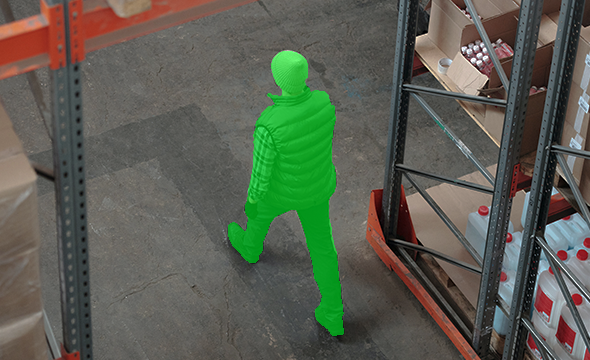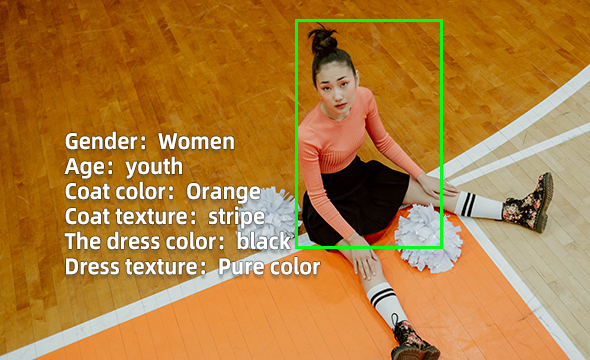➤ Labeling methods for human behavior recognition data
In the field of machine learning and deep learning, datasets plays an irreplaceable role. No matter it is image data for convolutional neural networks or massive text data for natural language processing, the integrity and diversity of data directly determine the learning results of a model. With the advancement of technology, datasets that collected from specific scenarios have becomes the core strategy for improving model performance.
The task of human behavior recognition aims to identify the specific actions of the human body by analyzing the posture of the human body, and provide technical support for human behavior prediction, emergency handling, smart fitness, smart nursing and other fields.
Labeling Method for Human Behavior Recognition Data
Common labeling methods for human behavior data include human body key point labeling and action label labeling. Human body key point labeling provides position information of each joint point of the human body. According to different recognition accuracy requirements, the key points of the human body can usually be marked with 14 points, 18 points, 22 points or even more points, all of which are based on the expansion of movable joint points in the human skeleton. Label annotation mainly marks the behavior category corresponding to the action, which is an overall description of human behavior. Human behavior is usually divided into static behavior and dynamic behavior, and the specific labeling forms are as follows:
➤ Human behavior recognition data
Static Behavior: directly mark the key points of the target human body in the image, and mark the overall behavior type.
Dynamic Behavior: For dynamic behavior, it is also necessary to add a video frame extraction module to extract image frames based on a specific sampling rate for dynamic human behavior videos, and then mark the key points of the human body on the image frames, and mark the human body behavior type labels on the dynamic behavior videos as a whole.
Difficulties in Human Behavior Recognition Tasks
Based on the actual situation, the task of human behavior recognition has the following three difficulties:
Complex behaviors: There are many types of human behaviors, and some behaviors have a certain degree of subjectivity (such as wandering behavior), which makes it difficult for algorithms to identify them.
Human body occlusion: The human body will occlude itself when performing specific behaviors. In addition, the human body will be occluded by other objects in the scene in a real scene, making it difficult to detect key points.
Data noise: In real scenarios, data noise has a greater impact. Taking security monitoring scenarios as an example, firstly, the resolution of security cameras is generally low, the shooting distance is long, and the proportion of human body features is small; Features have a greater impact; in addition, when the human body makes dynamic movements, it will also cause motion blur.
The above factors pose challenges to the robustness of human body recognition algorithms.
Nexdata Human Behavior Recognition Data
According to the task requirements and difficulties of human behavior recognition, Nexdata has developed a series of data sets for static behavior and dynamic behavior respectively from the data level.
● 3D Instance Segmentation and 22 Landmarks Annotation Data of Human Body
The dataset diversity includes multiple scenes, light conditions, ages, shooting angles, and poses. In terms of annotation, we adpoted instance segmentation annotations on human body. 22 landmarks were also annotated for each human body. The dataset can be used for tasks such as human body instance segmentation and human behavior recognition.
● 50,356 Images — Human Body Segmentation and 18 Landmarks Data
The data diversity includes multiple scenes, ages, races, poses, and appendages. In terms of annotation, we adpoted segmentation annotations on human body and appendages.18 landmarks were also annotated for each human body. The data can be used for tasks such as human body segmentation and human behavior recognition.
➤ Data on human - related scenes
● 5,521 People — Re-ID Data in Surveillance Scenes
The data includes indoor scenes and outdoor scenes. The data includes males and females, and the age distribution is from children to the elderly. The data diversity includes different age groups, different time periods, different shooting angles, different human body orientations and postures, clothing for different seasons. For annotation, the rectangular bounding boxes and 15 attributes of human body were annotated.
● 65 People and 15204 Fitness Videos Human Behavior Recognition Data
This data set uses color cameras and infrared cameras to collect human body fitness video data. In order to ensure the diversity of data, various designs have been made for shooting distance and collection clothing during the collection process. In terms of specific fitness behaviors, the data covers 50 common fitness movements, including rope skipping, push-ups, planks, vertical jumps, squats, jacking jumps, etc., which can meet the needs of most fitness behavior recognition algorithms. In terms of data labeling, the dataset labels the fitness action labels corresponding to each video.
Relying on its own data advantages and rich experience in data processing, Nexdata will be committed to empowering for the extensive application of human behavior recognition technology.
End
If you need data services, please feel free to contact us at info@nexdata.ai.
In the future data-driven era, the development prospects of artificial intelligence are infinite, and data is still a core factor for AI to unleash its full potential. By building richer datasets and advanced annotation technology, we can certainly promote more breakthroughs in AI in all walks of life. If you have data requirements, please contact Nexdata.ai at [email protected].







 Previous
Previous Next
Next




